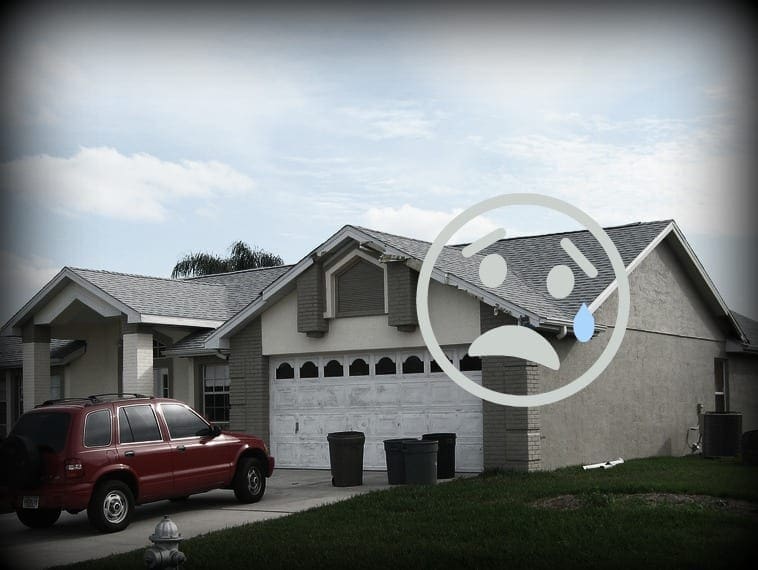It seems like hurricane season gets worse and worse every year. Not only are there more storms, but they’re stronger than before.
If you live in a hurricane prone area the thought of hurricane damage to your home is terrifying. Thankfully there are steps you can take to protect your home and belongings.
Keep reading to learn more about turning your home into a hurricane proof house.
The Components of a Hurricane Proof House
The truth of the matter is that you can’t build 100% hurricane-proof homes. At a certain point, the storm just becomes so powerful it’s impossible to resist.
What we try to achieve with modern hurricane proofing is to make your house more resistant to hurricane damage. This comes down to several major choices all working together, including:
- Home Design
- Materials Used
- Window and Door Choices
- Resistant Roofing
You may not be able to carry out all these steps. This is especially true if you already own a home in a hurricane-prone region.
Many of the most important can be retrofitted onto your existing home though. The most important ones to consider when making renovation decisions is your windows and especially your roof.
Investing in a hurricane-resistant roof is one of the smartest decisions a homeowner can make.
Shape and Design
At first glance, you might not think the shape of your home would have much effect on hurricane damage. The truth is more complicated.
Most hurricane damage is caused by wind or water damage. Even a category one hurricane has sustained wind speeds of 74-95 MPH. More powerful storms are much, much worse.
Standard rectangular and square shaped homes act as a sail. The wind of the hurricane blows directly against them, putting a strain on the underlying supports and structure.
They’re also more likely to take a head-on impact from windblown debris like trees or lawn furniture.
By using a more rounded design such as an octagonal setup the wind doesn’t have the chance to build up pressure. This helps prevent structural failure and makes it less likely debris will directly strike your home.
Water damage usually comes down to foundation choices. Many homes in hurricane-prone areas are raised off the ground. This makes them highly resistant to persistent flooding up to several feet.
Probably the most important preparation to take is on your roof. During a hurricane, your roof acts like your home’s shield. It bears the brunt of the wind, water, and debris of the hurricane.
Windows and Doors
One of the most important parts of hurricane-proofing your home is securing your windows and doors. If they’re broken the hurricane’s wind can blow freely into your home.
This creates a dangerous internal pressure difference that can actually cause your roof to fly off. There are several ways you can mitigate these risks.
The best place to start is by putting hurricane film to your windows and any glass doors. This is an easy to apply a film that you can pick up at any hardware store.
It’s transparent and helps protect your house against flying debris. Unfortunately, it doesn’t prevent the whole window and frame from being blown in by the wind.
For that, you need either storm shutters or old fashioned boards. Storm shutters are permanent fixtures that install on the outside of your home.
Most modern systems roll out like the security gates you see at malls. They can be deployed whenever you need them and take minutes to lock down.
If you’re running out of time your best bet is to board up windows with plywood boards. This should be considered a last resort though.
Plywood will protect your windows and vulnerable doors but they completely block light from entering your home. You also can’t install them until the hurricane is on its way.
You have to actually nail them into your home. This can damage your siding and window frames.
Building Materials
The materials you use in a hurricane proof home must be sturdier than normal. This includes things like your framing, siding, and sheathing.
To begin with, homes in hurricane areas should be built with larger and stronger framing. The frame is basically the bones of your house. Using more powerful bones makes the whole structure much stronger.
Most homes use OSB for the outer sheathing of the home. Hurricane resistant houses should use stronger plywood.
It’s more expensive but much more resistant to blown debris. The outer siding of your home also needs to be an approved hurricane resistant material.
Hurricane Resistant Roofing
Probably the most important part of a hurricane house is a reinforced roof. This includes everything from the trusses down to the type of roofing tile or surface.
The most basic step to take in hurricane proofing a roof is to have hurricane straps installed. These are small metal straps that go over your roof trusses and attach to the frame.
They make sure your roof is more firmly attached to your home’s underlying frame. This means it’s less likely to just blow right off.
That’s only the first step though. You still need to protect against wind and debris damage.
If you live in a hurricane prone area you should seriously consider getting a more durable roof. Asphalt shingles are inexpensive and widely used but can’t stand up to powerful hurricanes.
A steel roof is more expensive initially but is much, much stronger. Studies have shown that properly installed metal roofs can withstand extremely high winds.
They also look really nice and last for close to 50 years. This is a lot longer than a comparable asphalt roof.
Tile roofs are almost as hurricane proof as metal ones. They also have that old world charm many people love in their home.
Be Proactive
The best time to prepare for hurricane season was yesterday. The second best is today. Take steps now to create a hurricane proof house and protect your family from harm.
Want to know more? Contact us today to schedule a consultation and take the first step towards hurricane proofing your home.





0 Comments